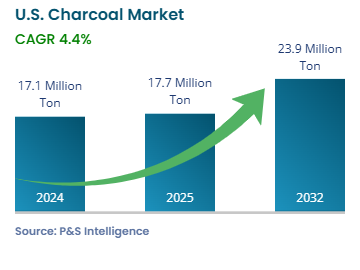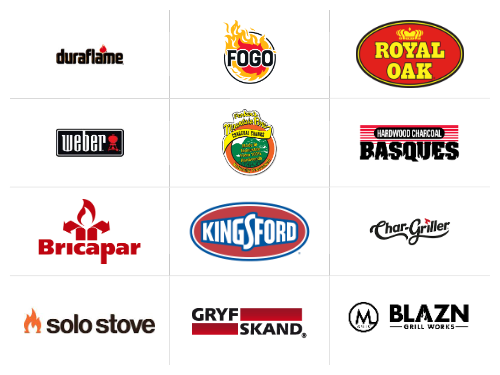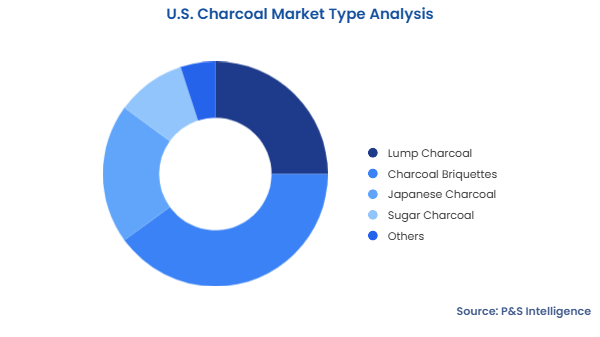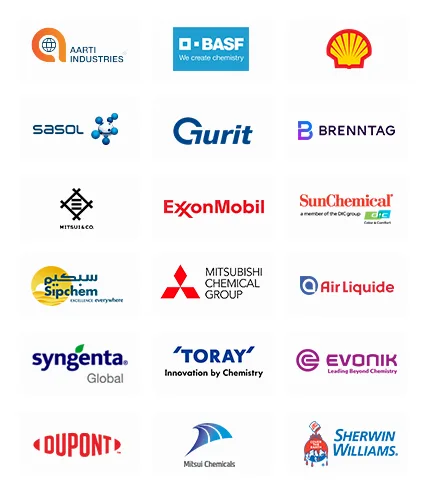U.S. Charcoal Market Dynamics
Shift toward Eco-Friendly and Sustainable Fuels Is Key Trend
With the growing environmental consciousness, people in the country now want charcoal that is made from wood without the use of synthetic additives. The production starts with pure wood, which creates lump charcoal, while the practice of producing eco-friendly briquettes from coconut shells and agricultural waste is also picking pace.
The need for sustainably sourced charcoal is increasing because people now care more than ever about the environment. Consumers display a strong preference for charcoals that have earned sustainability and carbon-neutral credentials.
Additionally, as the environmental awareness increases, customers now ask about the origins of the charcoal products they buy. They want to buy sustainable charcoal that comes either from well-monitored forests or sustainable woods. Consumer preference shifts drive charcoal producers to use eco-friendly sourcing methods.
To answer these demands, market players are sourcing wood from forests more responsibly and looking for new renewable plant resources. Charcoal manufacturers are also seeking better ways to cut emissions, such as improving production methods and making cleaner burning charcoal products.
Increasing Use of Affordable Charcoal in Recreational Cooking Is Major Growth Driver
People in the U.S. enjoy using their grills for cooking during the summer months and during weekends. Outdoor cooking fans prefer using charcoal to grill at family functions and cookouts as it has lower emissions than coal or wood.
With more people take up camping and outdoor barbecues, the demand for products that make grilling hassle-free grows. Small, portable charcoal grills enable outdoor enthusiasts to enjoy their favorite pastime, which is a true American cultural icon.
Furthermore, a portable charcoal grill can be used anywhere for casual cooking experiences. These small cooking appliances work perfectly for fast grilling and also support large-scale outdoor events. Because charcoal grills are easy to work with and offer exciting cooking experiences, consumers prefer them over gas or electric grills even though these methods have environmental and time benefits.
Most people find charcoal grills less expensive than others, including gas pellet models. Additionally, charcoal reaches more consumers who want to grill outdoors without paying for expensive gear.
In October 2024, Solo Stove launched the Cookout Kit, which works with the company’s Bonfire 2.0 fire pit; it is available for USD 299.99
Environmental Concerns Are Major Challenges
The traditional way to produce charcoal uses trees and forest wood, but the excessive or unsustainable harvesting of these resources leads to deforestation. When forests are already endangered areas, using burning wood for charcoal further harms them through the loss of plants and creatures and disturbs habitat systems.
Moreover, according to many charcoal users, the natural lump variety offers better environmental advantages, but businesses struggle to distribute it at low prices. The traditional process of making lump charcoal entails high production expenses and requires more labor than producing the standard briquettes. Moreover, expanding the market for these green alternatives is difficult because they are costlier than conventional charcoal products.
Further, the burning of charcoal raises the same environmental concern as burning any other fossil fuel. Emissions of CO, NOx, CO2, PM, VOCs, PAHs, and trace metals are produced in notable amounts when grilling on charcoal. Additionally, the easy availability of electricity hampers the market growth, as over 60% of the homes in the country already prefer it for cooking.




